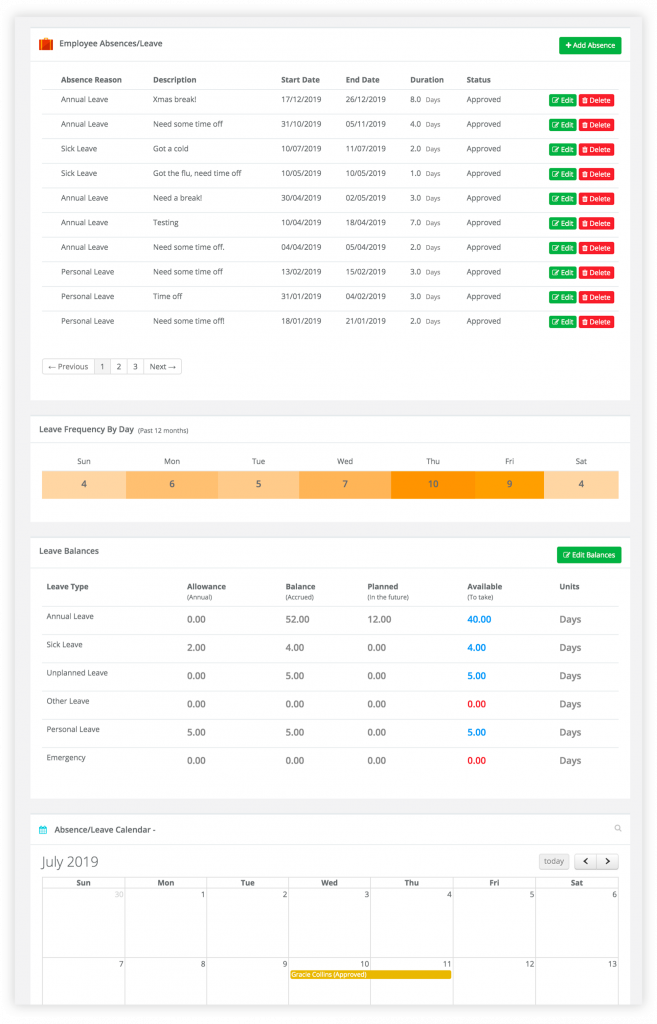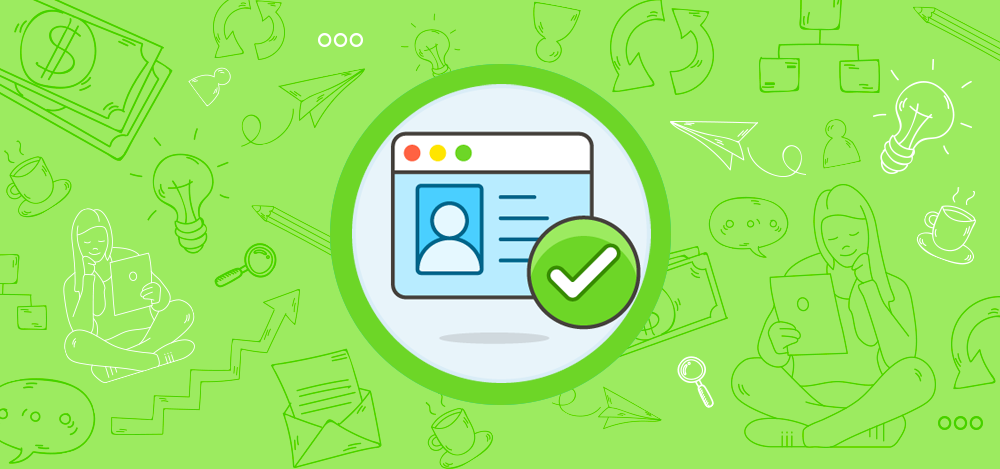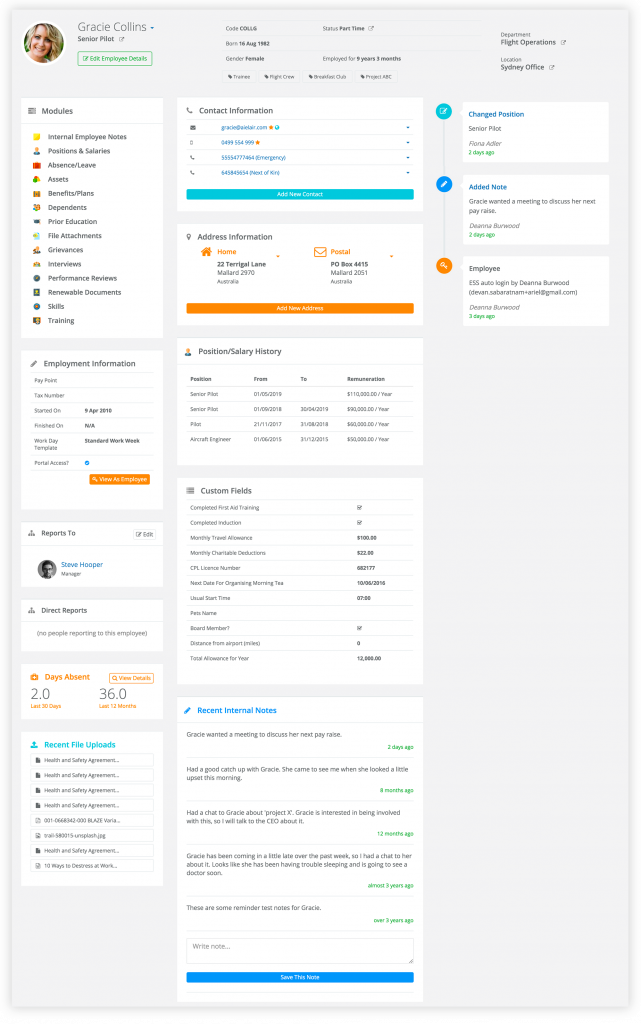If you manage a team of people, you’ll soon realize that having a structured way of storing employee information is essential. A spreadsheet might suffice for a while, but once you get more people and more complexities in who you want to have access to different types of information, a Human Resources Information System (HRIS) is necessary.
So what information do you need to keep on record about your employees? Let’s go through a list of the basic data points that almost all companies need to include…
Contact Information
Yes, your employees might be on your email system or chat system, but if you can’t reach them on that, what alternatives do you have? You need to keep a record of alternative contact methods including telephone numbers and their personal (or alternate) email addresses.
Don’t forget to store their work email address too. Although it may be obvious to you, other team members can be accustomed to communicating with them on other channels, or they may not communicate at all, so having a company directory is essential.
You should also have their home address on file too. This can be useful if you ever want to surprise your team member with a delivery, but it also might be necessary to know if there was ever an emergency and you needed to be able to locate your team members.
Details to store;
- Name
- Telephone numbers
- Work email address
- Personal / alternative email addresses
- Home address
Emergency Contact Details
If the last year has taught us anything, it’s to be prepared for unexpected emergencies. If something happens to an employee, or you can’t contact them, what are you going to do then? You need to have their emergency contact details up to date. It’s also important to regularly check these are current.
Emergency contact details to store include;
- Emergency contact name – usually their next of kin
- Emergency contact phone numbers
Positions and Salaries
Keeping a record of the positions and salary level that each employee is at is also vital information to store. But this should not be simply the current record, ideally, you want to easily see how the employee has moved through the company over time.
This means that for each change in position and/or compensation, you should record your employees;
- Position title
- Position start date
- Position end date
- Remuneration level (including the currency, and frequence – eg per month, year, etc)

Employment Contracts
Obviously, along with the positions and salaries, you should have the signed employment contracts on hand as well. You may also want to have the position description as well.
Document to keep on file;
- Signed employment contract (for each employee and for each position and salary change)
Bank Account Information
Obviously you need to collect your employee’s banking information in order to pay them, but it’s important to have this on file in case your bank loses it, or if you need to change the way you pay your team.
The information you need will vary depending on your employees’ banking location, but may include;
- ACH routing number / SWIFT number
- Bank name
- Account number
- Account name
- (You may also need the employee’s home address for their banking too)
Leave Records and Balances
Can you quickly pull up records to see how much leave your employees have right now? Or the details of the time-off they have taken this year (whether that be for sickness, vacation or something else)? Having a solid leave/time-off tracking system is necessary – not just for running the payroll, but also for employee management, liability tracking, and for employee’s own planning.
The information you need to have on record for each type of leave (eg vacation time, sick leave, personal leave, etc) is;
- Leave type, duration and dates for each time an employee has taken leave
- Any leave booked in the future (ideally showing in a leave calendar)
- Current balance information for each type of leave
- Records of what leave entitlements each employee has (ie your leave policies)

Company Assets on Loan
Do your employees have company assets in their possession, like computers, telephones, security cards, uniforms, or special equipment? Do you know exactly who has which items? This is why you need to keep a record of everything loaned to each employee.
For each employee, you need to have a record of each asset that they have. This information should include;
- The serial number or identifier
- A description of the item
- The date it was checked out by the employee (and the date checked back in)
- A photo of the item and/or receipt
Employee Benefits
If your company gives employees any benefits on top of their salary or base pay, it stands to reason that these should all be tracked and kept on record. This might include health benefits, a car allowance, or even sales bonuses.
For each employee, think about the different benefits they receive and record;
- The type of benefit
- The company providing the benefit (eg the HealthCare company)
- The value of the benefit
- Details about how to access the benefits
- Any documentation that goes along with the benefit
Performance Reviews
Performance reviews are one of the only management records usually kept on file about employees – so please, make sure you actually do have them on file! These can be needed if you are evaluating past performance, making decisions about career progression, or for cases where you need to manage someone out of the company.
Make sure you keep track of;
- The date of each performance review
- Who conducted the review
- The overall score or summary of the review
- The detailed evaluation
- The agreed next steps that the employee would take
Training Completed
As training and professional development is usually important both to employees and employers, it’s vital to keep good records of this as well. You don’t want employees claiming they didn’t receive enough training or likewise, to have employees booking inappropriate training given their previous courses.
For each employee, keep track of each training course they undertake with information such as;
- The date of the training
- Training name
- Details of the content
- Results of the employee
- Any certificates on finishing
Necessary Licences, Permits or Insurance
If your employees need to have certain documents kept up-to-date in order to do their role, you need to keep these on record. You may be asked to provide them so having them altogether can be a lifesaver. An important aspect of these types of time-sensitive documents is to have a reminder system in place to help ensure that they are always kept up-to-date. You don’t want to suddenly find that your employee is unlicensed, or without a current visa!
For each renewable document type, keep this information on hand;
- The type of document
- A (good quality) copy of the actual document
- The expiration date
- A reminder set before this expiration date!
**********
This can seem like a lot of information to store about your employees, but without this data on hand, it becomes increasingly difficult and more stressful to manage your team. A HR system like HR Partner puts all of this information in one place and helps you streamline processes like leave requests, recruiting, onboarding and more.
Book a demo or start a FREE TRIAL today (and benefit from our current promotion where you can get 50% off for 6 months!)
If you’re anything like most of our clients, you’ll soon find yourself sleeping better at night, knowing that all the employee data you need is in the right place!


